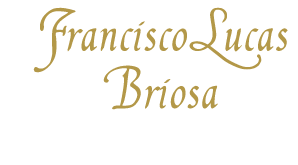 aí vão mais duas lâminas do excelente (sem trocadilhos) The Pen's Excelency, de Billingsley. e também um texto sobre o mesmo, escrito por Paulo Heitlinger (veja seu site).
aí vão mais duas lâminas do excelente (sem trocadilhos) The Pen's Excelency, de Billingsley. e também um texto sobre o mesmo, escrito por Paulo Heitlinger (veja seu site).Martin Billingsley (1591-)
Mestre-calígrafo do Maneirismo.
Mestre-calígrafo do Maneirismo.
Martin Billingsley introduziu a sua memorável obra The pens excellencie, or the secretaries delighte em 1618. A obra contém apenas 25 páginas de texto impresso, estas envolvendo 20 páginas com xilogravuras que mostram as diversas writinghands, incluindo caligrafias do alfabeto grego e do hebreu. Martin Billingsley não delegava a execução das gravuras a terceiros, como o faziam outros autores, e teve todo o brio em executar as suas próprias gravuras. E afirmava com grande orgulho jamais ter copiado:
«This is my Glory, That I haue not plaid the Theefe with any man, (though it were in
my power to haue done it), But quicquid scripsi, scripsi: whatsoeuer I haue written, I
haue done it my selfe.»
O livro indica também como afiar penas de ave e o modo correcto de segurá-las. Para o pragmático Billingsley, a arte de escrever era uma arte simples; devia aprender-se e aperfeiçoar-se não tanto através de complicadas construções geométricas, mas por simples emulação. Uma arte que um mestre passava aos seus discípulos, tida em grande estima, mas também funcional e prática, para ser aplicada em qualquer ocasião, em qualquer tipo de documento.
«Also (in my iudgement) he cannot be reputed a good Pen-man that is not able
vpon an instant, with any Pen, Inke, or Paper, and in the presence of
whomsoeuer, to manifest some skill: Being that the rare & absolute quality of
the Pen, consistent not in the painting, pricking forth, and tedious writing of
sixe lines privately in a mans Study, with the best implements: but a sweet
command of hand, and a certaine conceived presumption. »þ
vpon an instant, with any Pen, Inke, or Paper, and in the presence of
whomsoeuer, to manifest some skill: Being that the rare & absolute quality of
the Pen, consistent not in the painting, pricking forth, and tedious writing of
sixe lines privately in a mans Study, with the best implements: but a sweet
command of hand, and a certaine conceived presumption. »þ
obras e posts correlatos:
Giovannantonio Tagliente (Lo presente libro, 1524),
...
Ludovico Vincentino degli Arrighi ('Vincentino', La Operina, 1524, and Il modo de
Temperare le Penne, 1525),
...
Giovambattista Palatino (Libro nuovo d'imparare a scrivere, 1540, 1545;
Compendio del gran volume, 1566),
...
Giovan Francesco Cresci (Essemplare, 1560; Il Perfetto Scrittore, 1570); A INTELLECTA ESTARÁ LANÇANDO UMA FONTE ROMANA BASEADA NA OBRA DE FRANCESCO EM JANEIRO DE 2007
...
 Francisco Lucas (Arte de Escrevir, 1571), veja a fonte baseada em sua obra, por Pia Frauss. Segundo Pia Frauss:
Francisco Lucas (Arte de Escrevir, 1571), veja a fonte baseada em sua obra, por Pia Frauss. Segundo Pia Frauss:
...
Ludovico Vincentino degli Arrighi ('Vincentino', La Operina, 1524, and Il modo de
Temperare le Penne, 1525),
...
Giovambattista Palatino (Libro nuovo d'imparare a scrivere, 1540, 1545;
Compendio del gran volume, 1566),
...
Giovan Francesco Cresci (Essemplare, 1560; Il Perfetto Scrittore, 1570); A INTELLECTA ESTARÁ LANÇANDO UMA FONTE ROMANA BASEADA NA OBRA DE FRANCESCO EM JANEIRO DE 2007
...
 Francisco Lucas (Arte de Escrevir, 1571), veja a fonte baseada em sua obra, por Pia Frauss. Segundo Pia Frauss:
Francisco Lucas (Arte de Escrevir, 1571), veja a fonte baseada em sua obra, por Pia Frauss. Segundo Pia Frauss:"FranciscoLucas Llana was written at Madrid in 1570, by a man called Francisco Lucas. Employing the Spanish term for a cursive hand, he called it a Bastarda; but technically speaking, it is a humanistic cursive -- the style of writing which is mostly known under the name of Chancery. Reworking Mr Lucas' glyphs has been my first attempt to produce something like regularity; and of course, no Ks and Ws being needed in Spain, I had to dream them up myself -- hopefully that it doesn't show too much."
Gerardus Mercator (Literarum Latinarum, quas Italicas cursoriasque vocant, scribendarum ratio, 1540). post em produção

Nenhum comentário:
Postar um comentário